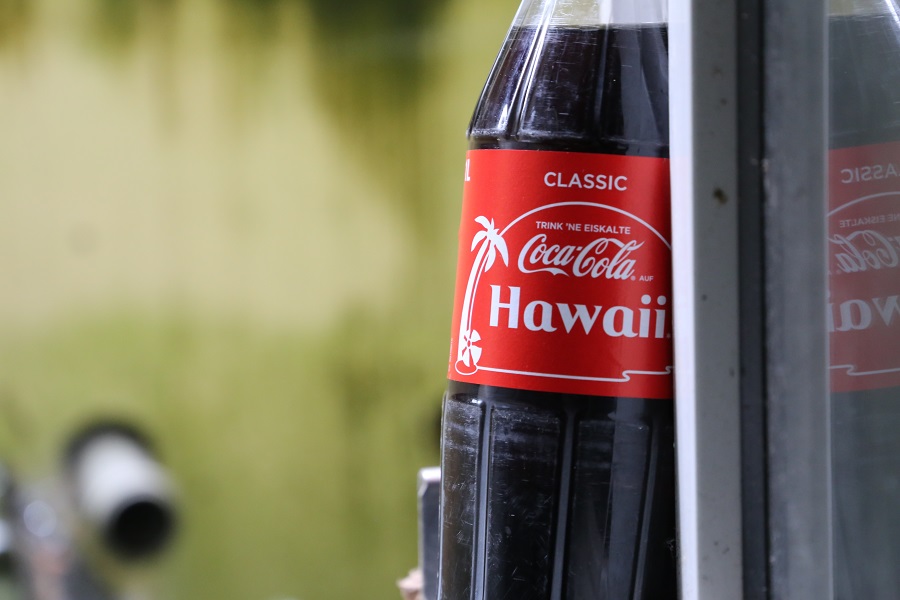One-to-one marketing is almost as old as commerce itself. To keep themselves successful, salesmen had to find an individual approach to every single customer, personalising messages and offers based on every piece of data they had and could use. In our busy and ‘always on’ world, it feels more like a luxury to be personally addressed with customised emails and other messages. However, as soon as you do manage to make your customers or business partners feel special, you raise your chances to gain their loyalty. Read on to find out why and how personalisation marketing can help you keep your existing business relationships and establish new ones.
Personalisation - an efficient way to stand out among other B2B email marketing campaigns
Personalisation marketing taking over
Customer loyalty originates from trust. If a customer knows, that the more he or she shares, the more personal will their relationship with the seller be, then this information will be given away much easier then to a new non-trusted business. It’s trust and experience that brings them back to the same supplier. Although this sounds more valid for B2C, it fits B2B relationships in the very same way. An individual approach to a business to business cooperation brings in a touch of personal in today’s business world, and this is what personalisation marketing is about.
Personalisation is what brings new customers in, and the old customers back. Studies have shown, that about 9 out of 10 consumers’ purchase decisions are somewhat influenced by personalisation. Speaking of e-commerce buyers solely, almost half of them may prefer to shop on a website listing personalised product recommendations, and circa 56% are keen to return to a website that provides personalized recommendations.
Answering the question why does personalisation marketing help boosting sales figures to such a degree is quite simple. First of all, when suggested items and constructive advices are truly valuable to customers, having their needs addressed individually, the overall interaction leaves a positive impression, and they are more likely to buy from the same seller, and even spread the word about this pleasant experience. Secondly, when matching the customers’ needs in a more efficient way, sales and customer loyalty grow as well. Thus, both sides are winning.

Aside of the individual information collecting along with management challenges, there is also the one of keeping things consistent. A personalised approach implies presenting the seller from the customers’ perspective, addressing personal needs one-by-one, or by channels. In the same time, the experience itself should be consistent for everyone, being the same across all - the website, app, physical stores, social media, agent meetings. Luckily, for B2B this task is somewhat easier to accomplish.
But not only should you personalise messages related to sales. Even the content that you offer and notify your audience about should better be personalised. When sending personalised newsletters by segments, firstly your targets will receive news that would have value to them, and secondly you are going to save their time by releasing them from browsing your latest news and updates. Yet again, the stronger the relevance of your personalisation messages, the higher the customer loyalty.
In addition to treating your customers individually, to achieve a beneficial level of personalisation you will also have to be someone for your audience, not just something and not just a company. The ‘human’ must be on both sides. In such a way, every person that you’d be addressing will not feel like he or she is called by name by a random bot.

Personalisation marketing is, actually, a very old approach to sales. Known also as one-to-one marketing, it was historically based on more personalised relations between store owners, sales people and customers. The formers remembered preferences, names, varied personal details about their customers, allowing them to address every single one individually, and conveying the feel of caring. We believe most of them really did care.
Personalization can also refer to an individual approach to an issue, and proves to be very appropriate for both B2C and B2B. A funny example here would be the ad series created by Upwork called ‘Hey World’, where the platform promotes itself as a means to find the solution to a greater problem. It somewhat implies that smaller and less global ones can be solved as well.
Examples of personalised marketing campaigns can be:
- Personalised product recommendations. Either on or offline, these are usually made based on previous purchases and feedback to prior acquisitions, as well as on products complimentary to the ones bought. A good addition to this is the so-called FOMO, or ‘fear of missing out’. If you recommend a product and mention in the same time that there are just a few items left of it (only if it is the case to do so), you might really see your revenues grow.
- Interactions on social media. Consider how special your business is, if out of all the other ones present on the market, your customers chose yours. It shouldn’t then be a surprise, that they might be expecting the same of you, especially when it comes to social media. Therefore, to keep them loyal to your company or brand, you better make them feel as special as you are. Engaging with customers on social media will both help you maintain your audiences sentiment, as well as know them advancedly, so that you could easier shape out their profile(s), and personalise marketing campaigns accordingly.
- Personalised emails. Although email is still a very popular marketing channel, one-to-one marketing in its essence is not as easy as it might seem. On the one hand, when you suggest your customers to submit their email in exchange for something (be it discount card, free ebook or any other tool for lead generation), chances are high that they will be keen to complete long forms filling in personal information. However, you will already find out what content, pages, products they were most interested in, and therefore create a less general customer profile and tailor further messages correspondingly. On the other hand, when you have your audience’s profile right away you may be able to tailor your personalised messages beforehand and contact each lead or group of leads with an individual approach right away.
- Custom video messages. It is not too easy to create these videos. However, with a really large database it might be as worth the effort as with a small one. A good example of widely used custom video messaging is Facebook, daily offering videos to various special occasions and holidays. Most probably you don’t run a social media platform, and might not need that degree of personalisation. However making a series of videos personalising them at the segments level, and emphasizing the individual approach by dynamic messages can have a good impression and convey the feel of a strong one-to-one marketing. Same works with personalisation images.
- Intelligent pop-ups. Probably, on various visited websites, you’ve often been asked to not ‘leave so soon’, prior to reading another article, or viewing another certain product. Some of these pop-ups are pretty convincing, while others are not and you close that tab in a few seconds. The difference is that the smart ones use personalised messages, and offer you to view something that is similar to what you’ve already seen.
When considering certain features of their customers, businesses may group their profiles into segments, and personalize marketing at a broader scale. Generally, the larger the business, the harder it is to simply personalise messages. This is when brand personalisation comes into play. Reaching a connection on an emotional level with a business’ customers is more likely to keep the customer loyalty, and grow the customer lifetime value for the company. Some companies create a special character to be associated with them or with a certain brand, other promote the brand itself as someone, not something, so that customers could feel a connection with the brand similar to trusting a friend.
Thus, an interesting approach to personalisation was generated by ‘Share a Coke’ - Coca-Cola’s campaign that allowed customers to personalise a coke bottle as they liked, and even have their names, locations or messages on the bottle. The first campaign was launched in Australia, and was so successful that it would have been irrational to stop it there. Appreciating the customised coke bottles as something personal and unique to each of the customers made the campaign successful and brought lots of engagement.

Amazon, and now other online stores too, uses deep learning technology to highly personalise products that might interest their customers. As a matter of fact, Amazon was the contemporary personalisation marketing pioneer. It recommended other products based on purchasing history and other items bought and rated, rather than on those of similar customers. Their algorithms were so efficient that even at the very start the suggested items proved to be effectively personalised. Today, with the great variety of products on tap, Amazon has improved its algorithms to the point were big data is analysed in real-time to offer several categories of suggested items based on personal as well as other buyers’ purchase and browsing histories. Now about a third of its sales is generated by personalised messages suggesting products. Amazingly, some other stores that have started using personalised purchasing advices, reported sales revenues of up to 68% in some groups or subgroups of products.
A nice personalisation marketing definition is the one given by Emarsys, which says that it’s the ‘implementation of a strategy by which companies deliver individualized content to recipients through data collection, analysis, and the use of automation technology.’
Why use personalised email marketing
As we’ve mentioned in our 2019 lead generation strategies article, interruption marketing is no longer something that can be of great use, as with the colossal amount of ads aiming to interrupt consumers from their activities, they are not working as well any more as even a few years ago.
When a user checks out some of your blog articles, or downloads an ebook, you can send a personalised message offering to that particular user to check your other content on the same or related topic, on your website or another platform, e.g. SlideShare. So, instead of virtually saying “you’ve read our blog, now buy something”, you’ll show that you care about bringing value to the user. With that in mind, it would be easier to form a trusted relationship instead of being yet another one of the many shoutouts enticing him or her to make an immediate purchase.
Simply taking a look at some of the email marketing personalisation stats can make you consider dynamic emails for the nearest future. Campaign Monitor states that personalised email subject lines led to a 26% higher open rate. Statista shows that emails delivering a personalised message had an open rate of 18.8% compared to a 13.1% open rate of non-personalised emails. According to Campaign Monitor, personalised email content may result in transaction rates 6 times higher than a non-personalised one. On top of it all, as per DMA, 58% of all revenue are generated by segmented and targeted emails.
One of the most important 2019 email marketing personalisation trends that you should consider originates from the growth of the number of mobile users and of email checks from phones or other mobile devices, especially when talking about B2B. Therefore, customizing emails to as mobile friendly as possible would definitely have more of your users read it through.

You can start personalising emails you send to your customers or business partners not by calling them by name or addressing a specific person, but by signing as a real person too. In certain cases, using ‘I’ or ‘we’ in the copy of your personalised email can convey the feel of a one-to-one advice, rather than that of yet another spammy letter in their inbox.
The best part probably resides in the fact that personalisation marketing does not have to be too complicated. Even if it might sound a lot easier than it actually is, all you have to achieve to make every personalised email recipient feel special is to resonate with them. Your email should deliver the impression of being sent by a friend, not by a robot. B2B does not have to be formal. It can be bold and fun too, as long as it keeps business common sense boundaries. Behind businesses (surprise, surprise!) there are people, who have emotions just like you and will be glad to smile at a smart joke when used appropriately.
You can send personalised emails on anniversaries or other special dates. For example, you can remind your addressee about a collaboration anniversary (‘it’s been a year since your first order with us, and we appreciate each and every one of them ever since’; ‘we’ve traveled together a thousand miles, and want to thank you for your trust to our company’; ‘you’ve helped us make 10,000 customers happy, and here is our gratitude for your prodigious contribution’, and so on). Not to mention personalised birthday messages or other special holiday greetings. Besides, a personalised email like this should better not be pushy and have a friendly purport, rather than try to sell something in a straightforward way.
A popular type of personalised emails is the behavior-triggered ones. If you have a social media profile, you should know that once you do not log in to your account for a certain number of days in a row, you will get a notification reminding you of that. Behavior-triggered personalized emails are not used by social media only. Usually, these messages are automated and do not involve too much hassle, being a good save-time-bring-users-back tool. Many businesses send out emails reminding you to re-login on their website, and the stats show that these personalised email messages do work.
And one more thing. Never forget, that when a customer or business partner representative offers you more private or detailed information, he or she awaits you to put it to good use. Moreover, with all the personalisation email marketing trends and habits formed thereon, you can be sure that most of your addressees will have expectations from you and would presume some degree of personalisation from each letter he or she opens from you.
How can you achieve hyper personalisation
Hyper-personalization is the use of behavioral and real-time data to offer a much better targeted and increasingly personalised products to customers, website visitors or business partners.
Successful hyper-personalisation can be achieved by using machine learning, artificial technology, and predictive analytics (just like Amazon does). However, there is no tool out there yet that would fit most, as the way a company sells and who it sells to varies from one business to another. It becomes kind of obvious, that creating an individualised artificial intelligence tool to personalise emails to customers is not for everyone. It may just be too expensive and, thus, not efficient. This is especially valid for B2B companies that don’t have too many business partners, when analyzing them and the ways to address them may be done manually, without taking too much time. Moreover, machine learning needs a lot of information to get ‘educated’ on, resulting in the impossibility for smaller B2B companies to apply it due to insufficient data. Luckily, business intelligence platforms provide the solution.
Usually, company directories, such as Global Database, comprise all the information you may need to be able to formulate a personalised message from the very first email. In addition, you get the direct email addresses of decision makers, so that you can be sure that you are talking to the person you need, and avoid all the gatekeepers. Imagine the impact of a personalised email that immediately shows the addressee that you know what they need and what is of value to them.
Personalisation marketing proves to be efficient and very likely to help customer loyalty grow. However, especially in the case of hyper-personalisation, it consumes a lot of your time. Thus, before you even consider it, you should be more than sure that you are doing it for the right people, and that effort and resources are not a waste. It gets really frustrating when you spend your time and money, to realize afterwards that the targeted person, for example, does not have the decision-making power.
After exchanging a few emails, you can consider going further to hyper-personalise messages you send. For example, Global Database B2B company directory offers you a detailed information about businesses’ decision makers, like date of birth, nationality, and other data. Not only can you send them hyper-personalised birthday emails, for example, but also other special occasion or culture-related holiday greetings.
A step forward in hyper personalisation of your email marketing campaigns is adjusting your dynamic content according to the device the email is opened from. For example, using a CTA saying ‘click here’, when the email is opened on desktop, and ‘tap to view’ when a phone or tablet is used.
Don’t forget, though, to put yourself into your customers’ shoes before launching your hyper personalised marketing campaign. You should never forget about the boundary between personalised messages and creepy ones, so that instead of growing your sales your campaigns would scare the customers away, forever. Try to envision how would you feel if you received a message that personalised, and be objective. You should keep it human, but not give your customers the impression that they are being permanently watched.
To sum up…
Personalisation marketing proves to be one of the most efficient ways to approach a customer today. This refers to both - B2B and B2C. The more information you have about each of them, the higher you chances to stand out of the crowd, if you personalise your messages accordingly The more special you make them feel, the more special you will be to them, growing their loyalty to your company or brand.
